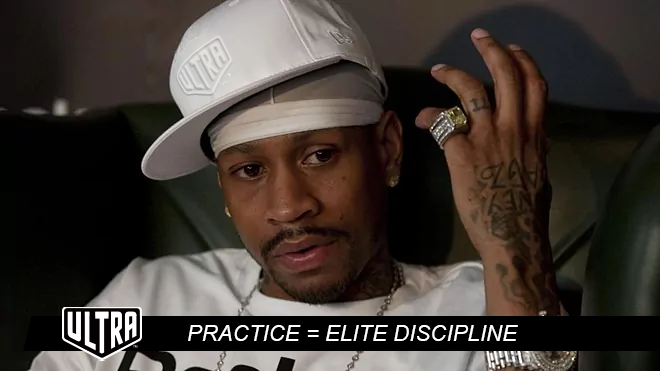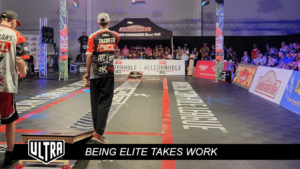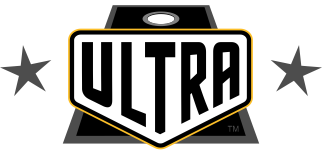We’re Talking About Practice

Cornhole practice is a topic of vast debate. With cornhole growing from a backyard game played at BBQs and tailgates into a televised sport, some players are even making a living doing it, players have dedicated more and more time to getting better through practice. Practice can separate the best players from everyone else. Time is one component of practice and mastery. But you must have good practice habits or you risk building bad technique that will be hard to fix later. So just how should you practice? What counts as practice? And what are the top players doing to practice? We will explore that below.
Mastery
You may have heard of the 10,000 hours rule. It basically states that is takes 10,000 hours of doing something to achieve mastery at whatever it is you are doing. For a baseline, if you do something for 40 hours a week for about 5 years, you can expect to become pretty proficient at it and achieve a level of mastery. That amount of time is 10,000 hours. Maybe that is why they say you need to spend 5 years doing something at work to be considered Senior Level? If you subscribe to this theory, you better get to work! Sure talent can jump someone to the head of the line, but experience and time will often win in the end. This is probably why you see so many of the same players finishing at the end of the big tournaments on TV or in your local area. They have likely put in more time, and thus have more experience in games, in big moments, under the lights and of course they have likely thrown more bags. Been there, done that, usually equates to more confidence when the pressure it turned all the way up.
What Counts as Practice?
So what constitutes “Practice” and how can practice help? Well there are several types of cornhole practice. Each has it’s pros and cons. Personally, I’d suggest mixing it up and rotating through various routines, drills, and working in live games and tournaments to keep things interesting and build good habits. Practice will build muscle memory, get a player reps, provide situational problem solving and more. Practice is where a player will build the foundation of the game they bring to a blind draw or tournament. It’s that foundation that a player will lean on when playing a big match.
Here is what a player might do for practice:
- Drills and Exercises
- These are repeated over and over again to improve or build a specific skill.
- Various games and personal challenges
- These are ways to improve focus and make practice interesting.
- These mini games will improve performance for specific areas of a player’s game.
- Live games
- Quality game practice is important.
- Playing against specific practice partners can improve your game and force you to work on specific skills in game situations.
- Live practice games can be faster and the repetition can be higher than attending a blind draw or tournament.
- Tournament action
- This is where a player should be working on soft skills, mental toughness, and game situations.
Cornhole Practice 1: Drill and Exercises
When working on specific drills and exercises, a player is attempting to focus on one thing or a subset of skills. If a player wants to develop a specific shot, such as an airmail, throwing X-number of airmails a day will start to develop and improve that shot. A player may not employing that shot in a game just yet. They are working on the muscle memory to shoot that shot consistently.
Airmails:
I spoke to a Team Ultra player who mentioned that going into a tournament, he will MAKE 500 airmails a day. You read that correctly, MAKE 500 airmails a day. If you are making 25% of your attempts, this is going to be a long practice routine. It likely will likely lead to a sore shoulder. I’d suggest starting with a lower number like 50 or 100. Then slowly increase your target number as your bags-made percentage rises. You can do the same thing for push shots, roll shots, cut bags, etc.. You may want to find a friend who will sit there and put bags on the board where they are needed to be so you can work on these specific shots.
Slide Shot:
Do not neglect the slide shot. This is the bread and butter of a cornhole player’s game. Even the greatest airmailers and shooters know that a consistent slide game will lead to the highest PPRs and in general more wins. That same player who makes 500 airmails, he said to me that he also MAKES 1000 slide shots a day, as he tunes up before a National Tournament. If you are making 50% of your slides, which is basically what a 7-8 PPR player is doing, then you are going to need to shoot 2000 bags to get to 1000 made. As your PPR gets to 60-65% that number drops to between 1667-1540 shots. Many of the best players in the world rely on these 2 specific shots and practice them daily.
I personally like to use the Ultra Trainer Pro as a practice tool. The Trainer Pro helps me to keep working on hitting the board where my bags will have the best chance to slide into the hole. It grooves my toss and keeps me down the middle. I will also use the airmail fence to work on my airmail shot. You can run a number of drills on this board and it will definitely help keep you middle when it matters most.
Practice Like You Play:
Don’t get lazy when doing drills. Something I learned doing the previously described drills, was that I would get mentally lazy shooting for a high number of makes. I’d dip to 50% made at times. I was more focused on the end result than on the shot I was throwing at that moment. My form and technique would suffer. It started to show in my 1st and 4th bag made percentages. I found that breaking 1000 into smaller chunks, like 100, was better and allowed me to work on my focus. You’ll throw 100 bags in a game across 25 rounds. 25 rounds is what you can expect to play in a high level Advanced game between two well matched players. Some games will go longer. One of the greatest matches of all time saw Josh Holland make nearly 89% of his bags while Trey Burchfield was just under 88%. That game went 47 rounds. They each threw 188 bags and Josh had just 3 bags off the board while Trey’s 5 off were likely the difference. That is elite discipline. These two shooters went bag for bag for over 40 minutes. You don’t get to that level without practice.
Cornhole Practice 2: Games and Challenges
Games and Challenges are another way to practice cornhole. This helps not only with the muscle memory, but also sharpens a player’s drive, skill and mental toughness. Some common forms of this type of practice include Ghost Cornhole and Dekarounds.
Ghost Cornhole? This is much like when you were a kid and you had a ghost runner in kickball or baseball. The ghost runner advances as the runner behind him does. It’s the same concept in ghost cornhole. The ghost makes the same number of points per round, every round. A Ghost 8 is going to score 8points every single round, no matter what you do. You can score with a 9, 10 or 12. You can wash with an 8. Shoot a 7 or a 6, and you’ll give up points. A couple of years ago, I would play a ghost tournament as a practice routine. Start with a Ghost 6, then 7, then 8 and work my way up to 9 or 10. If I lost to say ghost 8, I would go into the loser’s bracket and face off with the Ghost 7 again and hopefully get the Ghost 8 the second time. Double dipping the Ghost 9 or 10 was quite the challenge. It was much easier to stay on the winner’s side of the bracket. Just like in a real tournament. What skills were developed with this game? Focus and a mean slide game. Plus you’d really have to think about when you risked going up for a drag airmail or tried to cut a bag to bring one back into play. Every miss costs you potential points. The mental side of this is exactly the type of toughness and resolve you want to build for when you are in a long game with a well matched opponent.
The Dekaround is similar. You are playing 10 rounds (Deca or Deka as a prefix means 10). Each round you are shooting 4 bags and recording your score. A perfect Dekaround would be 120pts. The grind at the end to get 1 more 4 pack or to shoot a 10 in order to make 100 (or whatever your goal is) is what you are working on. Both of these games will help replicate the stress of a real game as you play on an open board. You might say: “but in a real game you encounter blocks and need to consider when to shoot”, etc.. While that is true, you are still working on your most important shot, and now you are adding stressors that mimic racing down the stretch in a big match. If we look back at the epic Holland vs. Burchfield match, the last 12 rounds are even with 11 4-baggers and 1 wash at 7 before Burchfield opens up and Holland finishes with a 12. Holland throws 13-4 baggers and a wash at 7 which is nearly a perfect Dekaround (115) to win the game. That is elite discipline and mental toughness. That is what you can get from this type of practice to go with those reps.
Cornhole Practice 3: Live Games
The 3rd type of cornhole practice would be Live Games. This is when you and a partner or two battle game after game with one another. If you can get a practice partner who is better than you, it will push you to find a way to win. If you are the better player, you might get away with shooting a couple more risky shots a game, but no one wants to lose, so you better make sure you choose your spots wisely when you do take the risky shot.
With my live games, I have introduced 2 types of variations that can add to a cornhole practice session. The first is to handicap the match. Maybe I give a player a 10-12pt head start (you can determine what works best). This can replicate some stress of a big game where you are working back from a deficit. It also forces you to be more picky about when you shoot the big shot and when you back block. The 2nd variation is an all airmail game. Often I will end a session of live game practice shooting an airmail game. We will play to 21 by 1’s, with each made shot worth 1pt. So our arms don’t fall off, we will race to 21 without cancellation scoring. We like to award the extra point for an airmail drag or an and-1. You just have to call the shot first. This will make airmail practice a little more fun and I can attest to it making me a better airmail shooter. Live Games like this are some of the best practice you can get. You can stop and shoot that missed push a second time or utilize unlimited time outs so you can analyze the situation and make the right shot attempt. You can amp the stakes up by putting some cash on the line if that is what gets the games to matter to you. The progress both players often see from this will be noticeable when they go to a tournament and play against other players.

Getting to the highest level takes practice
Cornhole Practice 4: Tournaments
Last we have Tournaments. I hear from many players that they cannot shoot alone. They don’t know what to do. They get bored. Etc.
There are a ton of different excuses. People often reason with themselves as to why they can’t shoot alone on an empty board. This player typically views local blind draws, switch and swap events as “practice”. I’d personally say this is avoiding practice. Playing in a local blind draw can have some good qualities. You are playing live games and trying to win. Nothing quite replicates that. However, you may be forced to work on parts of your game you may not employ regularly. Racers for example may not be able to win a blind draw scoring 2 points at a time while their partner gives up 3, 4, or 5 points a round. The math doesn’t add up and that racer may be forced to do things that do not suit their style of play, if they want to win the game. On one hand, a player may think this is great practice. Working on an aspect of their game that has room for improvement may round out a player’s game. Another player may look at this same scenario and realize that part of their game isn’t something they are going to regularly utilize. This repetition could build bad habits concerning game strategy and management.
Tournaments are best used to replicate game speed and situations. Playing deep into a tournament, where the games matter, is the key for tournaments to be considered good cornhole practice. If you are challenged to get deep at blind draws, when you regularly are getting deep in singles and BYOP doubles, you may find that practicing against ghost 10 is a better use of your time. Tournament play can be really good practice for shooters. Setting up shots, and hitting big shots in clutch situations is what these players live and die by. There are few great ways to practice this without help. In a local switch event, you are looking at 5 or more games where you can practice setting up shots and hitting the big one. You’ll need a thick skin to use locals for practice. Your partners might get annoyed at you when you deviate from the textbook shot to setup something or you shoot something they don’t see you do very often.
As for reps, playing locals isn’t going to get you the number of reps you can get in less time playing at home. You will play 5-6 games that often average 10-12 rounds. You are shooting 5 maybe 7 times a game. At 8 times a game you are throwing 32 bags and doing that 6 times in a night gets you to 192 bags. You can beat ghost 10 4.4 times in a night and throw the same number of bags. And if the games are shorter (they often are) you are getting maybe 120 live bags in a night which may be as little as 3 Dekarounds. In short, make sure you choose your practice routines and use your time wisely.
What’s Next?
Cornhole continues to evolve and even the very best players are putting work in multiple days a week. If you want to be elite, you are going to find out that cornhole practice is a key component of that. Find what works for you. Do not be afraid to ask the top players in your area what they do for practice. Try different routines. Varying what you do in each session will make it more interesting for you. And most importantly, throw. The more you throw, the more you are grooving that muscle memory. Once you can count on what your arm is going to do, you can really start to play the game at a high level.

